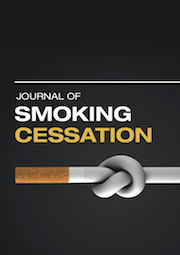Article contents
SmokefreeTXT Behaviour Change Technique Analysis
Published online by Cambridge University Press: 20 December 2016
Abstract
Mobile text-messaging smoking cessation interventions have demonstrated their efficacy in increasing cessation rates. These interventions tend to be multifaceted and there is a need to specify their building blocks. The purpose of this study was to use the Behavioural Change Techniques Taxonomy V1 (BCTTv1) to systematically analyse the behaviour change techniques present in the SmokefreeTXT (SFTXT) adult programme. The entire SFTXT library was coded using the BCTTv1. Frequencies were calculated to assess the presence of BCT groups and unique BCTs in the entire programme. The mix of BCTs was also examined by programme week and during periods of high user dropout. Of the 16 groups of behavioural techniques, 14 were present in SFTXT. Of the 93 distinct BCTs, 41 were present in the full SFTXT message library. The most prevalent BCT groups were Feedback and Monitoring, Natural Consequences, Social Support, and Shaping Knowledge. There were differences in the mix of BCTs across the duration of the intervention. The results will enable us to test how changes in the use of specific BCTs and their frequency of use over time, impact (1) engagement with the programme (particularly during the days with high dropout rates), and (2) smoking cessation outcomes over time.
Information
- Type
- Original Articles
- Information
- Copyright
- Copyright © The Author(s) 2016
References
- 10
- Cited by

